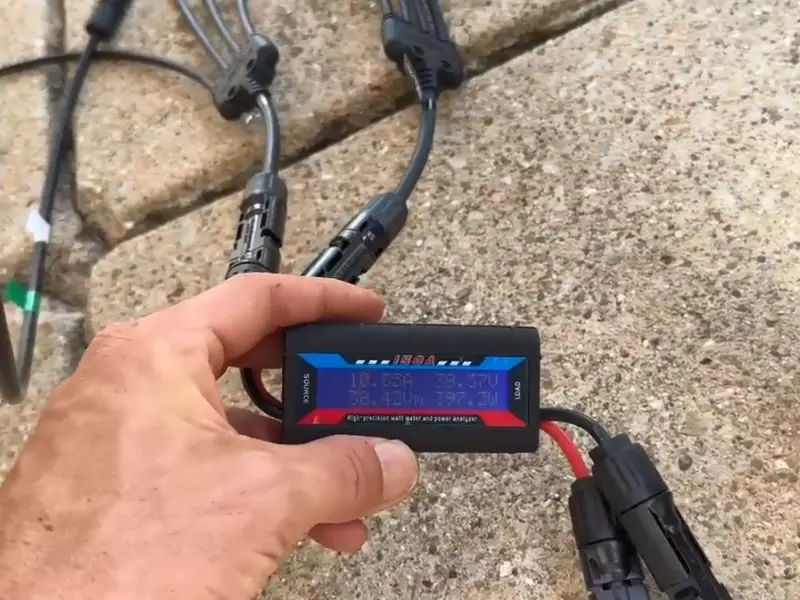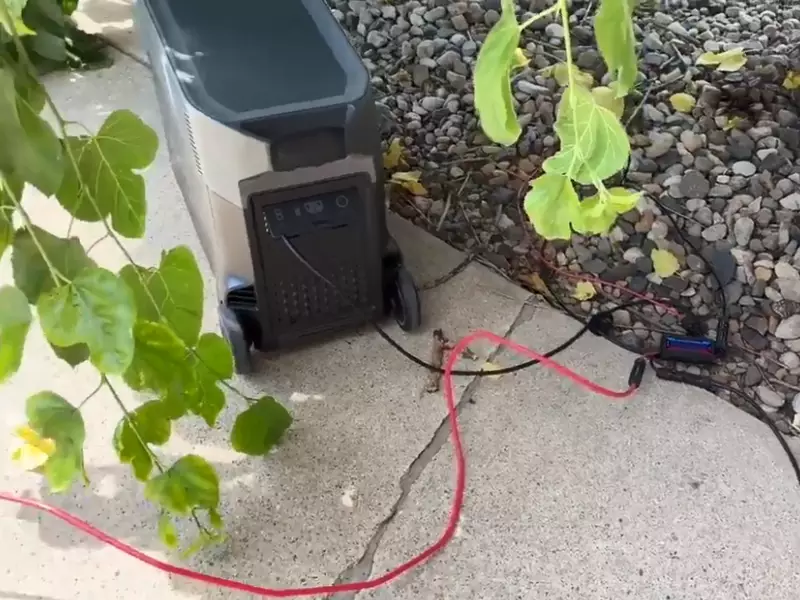Solar energy is a promising and viable source of renewable energy with immense potential for global sustainability. Wiring solar panels correctly is an integral part of any solar installation, as it ensures the efficient and safe operation of the system. It involves connecting individual solar panels in a particular arrangement and aligning the electrical wires properly to transmit power efficiently.
Essentially, the wiring arrangement in solar panels determines how the electrical energy, generated from sunlight, is harnessed and utilized. The proper wiring of solar panels promotes efficiency, safety, and the longevity of the solar system.
The ability to understand and perform proper wiring requires knowledge about key concepts such as voltage and current, the methods of connecting solar panels, the difference between series and parallel connections, the best types of wires for solar installations, and the process of stringing solar power.
The Basics: Voltage vs. Current
When dealing with electricity, particularly in wiring solar panels, two fundamental aspects to consider are voltage and current.
Voltage, denoted as V, is the electrical force that drives an electric current between two points. In the context of solar panels, it represents the potential difference between the positive and negative sides of the solar panel. Higher voltage means the solar system can deliver the same amount of power with less current, which can help reduce energy losses in the wiring.

Current, denoted as I, represents the flow of electric charge, measured in amperes (A). In solar panels, the current is determined by the amount of sunlight hitting the solar cells. The higher the current, the more power the solar system generates.
The interaction between voltage and current is guided by Ohm’s law. This law states that the current through a conductor between two points is directly proportional to the voltage across the two points. In solar panels, the relationship between voltage and current is essential for configuring the wiring properly to achieve optimal performance.
Fundamentals of Solar Panels
Solar panels work by allowing photons, or particles of light, to knock electrons free from atoms, generating a flow of electricity. This process takes place within photovoltaic cells, which are combined in a solar panel to increase the power output. Wiring plays a crucial role in this setup. It connects the individual cells within a solar panel and also links multiple panels in a solar array.
How to Connect Solar Panels?
Connecting solar panels requires a careful and stepwise approach to ensure safety and effectiveness.
- Identify the positive and negative terminals: Solar panels have a positive terminal and a negative terminal, usually marked with ‘+’ and ‘-‘ symbols respectively.
- Connect the cables to the solar panel terminals: You can use solar cables with MC4 connectors for this. The male connector should be attached to the negative terminal, and the female connector to the positive terminal.
- Connect the panels in the desired configuration: Solar panels can be connected in series or parallel configurations or a combination of both, depending on the system’s voltage and current requirements.

Connection Types: Series vs. Parallel Methods
In a series connection, the positive terminal of one panel is connected to the negative terminal of the next panel. This configuration increases the total voltage output (voltage adds up), while the current remains the same as that of one panel.
A series connection is beneficial in cloudy conditions as it allows for a higher voltage output. However, if one panel in the series underperforms (due to shading or dirt, for example), it affects the performance of the entire array.
In a parallel connection, all positive terminals of the panels are connected together, and all negative terminals are also connected together. This configuration keeps the voltage the same as one panel, while the current becomes the sum of the currents from each panel.
A parallel connection is advantageous when there is a risk of partial shading, as the underperformance of one panel does not significantly impact the entire system. However, it requires heavier gauge wire to accommodate the increased current, which can add to the installation costs.
When choosing between series and parallel connections, it’s essential to consider factors such as shading, wire costs, and system requirements.
Selecting the Best Type of Wire for Solar Panels
The type of wire used in a solar panel installation significantly affects its efficiency and safety. Here are some factors to consider when choosing solar panel wiring:
- Wire Material: Copper is commonly used in wiring due to its high electrical conductivity and durability.
- Wire Size: The wire gauge (diameter) should be chosen based on the current it will carry and the length of the wire to prevent overheating and energy losses.
- Insulation: Solar panel wires should have suitable insulation to withstand environmental conditions such as sunlight, heat, cold, and moisture.
- Regulatory Compliance: The wiring should meet the standards and regulations set by relevant authorities to ensure safety and quality.

A Guide to Stringing Solar Power
Stringing in solar power refers to the process of connecting multiple solar panels together in a series, parallel, or series-parallel combination. Here’s a basic guide on how to string solar panels:
- Plan the String Configuration: Based on your solar power system’s requirements and conditions, plan how you’ll string the solar panels.
- Make the Connections: Using appropriate connectors and wires, connect the solar panels according to your plan.
- Check the Connections: Make sure all connections are secure and correctly oriented. Verify the combined voltage and current match your expectations.
- Connect to the Charge Controller/Inverter: After confirming the string’s electrical parameters, connect it to the solar power system’s charge controller or inverter.
Common Mistakes to Avoid While Wiring Solar Panels
When wiring solar panels, certain errors can negatively impact the performance and safety of the system. These include:
- Mismatched Panels: Panels with different specifications should not be mixed in the same string. This can lead to underperformance or damage.
- Incorrect Wire Gauge: Using a wire gauge that’s too small for the current can lead to overheating and power losses.
- Inadequate Protection: All wiring should be properly insulated and protected against environmental conditions to prevent damage and safety hazards.
Engaging professional help or advice when dealing with complicated setups or unfamiliar situations is highly recommended.
Conclusion
Wiring solar panels is a task that requires knowledge and precision. By understanding the basics of voltage and current, choosing the appropriate connection method, selecting the right type of wire, and learning how to string solar power effectively, you can ensure that your solar panel system operates efficiently and safely.
While it might seem challenging initially, gaining a solid grasp of these concepts will undoubtedly make the process smoother and more rewarding.
